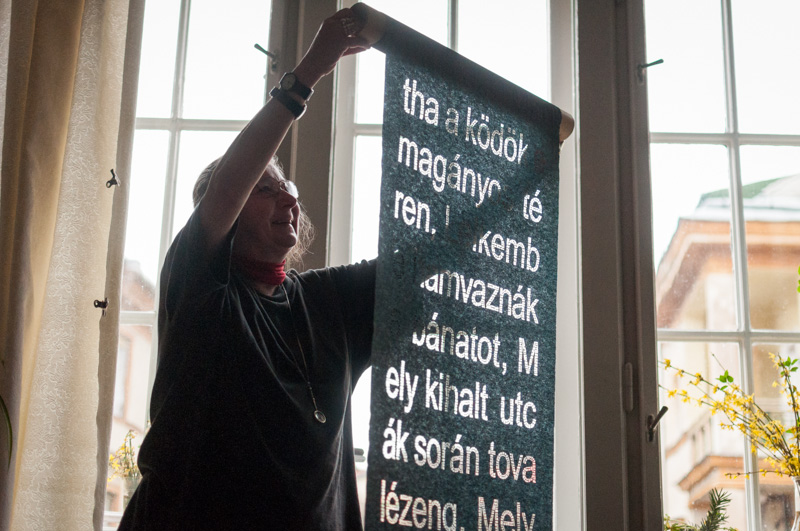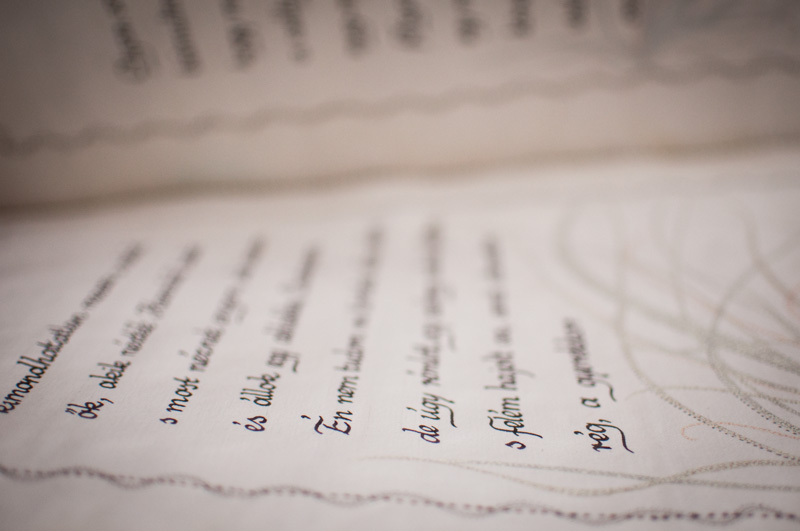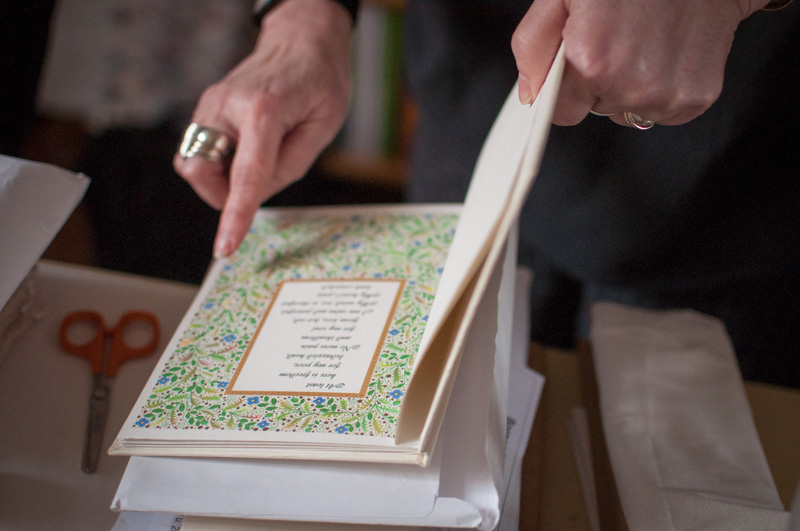Bornemisza Rozi
Reading the poem ‘Ten Steps’ of Sándor Weöres: “Scatter your treasures – The wealth be yourself. / Wear away your decors – The beauty be yourself. / Forget your amusements – The merriment be yourself. / Burn your books – The wisdom be yourself. / Waste your muscles – The force be yourself. / Rake out your fires – The love be yourself… / Get together your life and death – The completeness be yourself” … and a picture appeared before my eyes, and then I made my first artist book.
.
For a later exhibition as well, I got inspiration from the poet Weöres. “The Earth is below you, the Sky is above you, the Ladder is in you” – this is the poem. The short line hidden in a tiny paper box, and several meters long paper ‘ladder’ annexed to the box and hanging below, waited for the visitors.
“It seemed so simple to make letters with cutting, engraving! This makes the text lacelike and enigmatic. I did not count that to prepare an object for exhibition needed a summer to carve.“ Folding out a paper from a simple paper box, we can read eternal messages in Latin: Nec dulces rivi ex fonte effunduntur amaro, that is, No sweet water comes from bitter spring. But, there are other words rolling out: Natura Artis Magistra, that is, The Nature is the Teacher of the Art.
Carved letters have become emblematic. Thus, for the Art Gallery exhibition commemorating the 50th anniversary of the 1956 revolution, a 3-m long object was made with this technique, containing Gyula Juhász’s poem “Budapest Autumn”. “Grief” – this was the password of the commemoration, so she selected black textile. For particular reason, organizers of the exhibition gave a black background as well.
The latest versions of her individual technique is the lace-book, when the pattern of the album is given by embossed leaves, pressed between two paper sheets, or, the crochet-book, when the artist’s book consists of crocheted letters. “Once I found a roll of thick sturdy canvas. I cut it to giant folio size, and tissue paper sheets were mounted on both sides. For the bevel-edge pen is sliding better on the paper…
On the pages stitched together with plainwork, there is the Kosztolányi’s poem, the Drunkenness at Dawn. “… Unspeakable over there and far away / they who watched the army of Hannibal / And now are looking at me, who fell here / Standing at a window in Budapest. / I don’t know, what happened to me then / but it seemed a wing fluttered above me / And what I buried long before / The childhood leaned to me.” I even imitated an embroidery, I only need to make the covers…
The book poeticizing the lovers of Balassi (1) is a unique item, too. It was printed using the digitized original, but gilded. Its interesting feature is the classic pairs of the pages with broad margins. It strictly follows the rules of typography. What is the typography? Writing with types. This word of Greek origin expresses the equilibrium of the letters, the pictures, and void spaces. It is a craft but an art as well. Organized by the Association of Hungarian Typographicists ‘TypoSalon’, the exhibition named ‘Typochondria’ has been established in every year, tenth times now. The catalog presenting more than 600 works is a rarity of printing as well.
(1) Bálint Balassi / Hungarian poet 1554-1594
It is predicted that the book will slowly disappear from our life. The Artist’s books are helping us to consider a book, a formatted poem, or a message not only for reading but an interactive artistic experience.
PREVIOUS: Breznay Pál
NEXT: Gaál József

















USER COMMENTS ( 0 )
Follow Comments via RSS feed. Trackback Comments from your website.